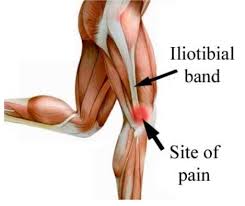Enhancing Lumbar Mobility: Exercises for Back Health
Lumbar mobility exercises are highly beneficial for managing both chronic and acute mechanical low back issues. These exercises gently stretch muscles that are often neglected, promoting increased blood flow to the affected area and accelerating the healing process. If you’re experiencing back problems, consulting your osteopath or healthcare provider is recommended before starting any exercise regimen. Below are some basic exercises adapted from the NHS Choices website to help improve lumbar mobility and alleviate back discomfort.
Exercises for Back Pain
When beginning these exercises, proceed gently to acclimate to the movements and determine your comfort level in each position without inducing pain. Aim to incorporate this routine into your daily schedule, complementing it with activities like walking, cycling, or water-based exercises.
Important Considerations:
- These exercises are general recommendations for back pain and may not be suitable for everyone.
- Seek advice from a healthcare professional, such as your osteopath, before starting these exercises. Discontinue immediately if you experience any pain.
Bottom to Heels Stretch
Purpose: Stretches and mobilizes the spine
Start Position: Kneel on all fours, with knees under hips and hands under shoulders. Maintain a natural spine curve, elongate your neck, keep shoulders back, and avoid locking your elbows.
Action:
- Slowly move your bottom backward while preserving the natural spine curve.
- Hold the stretch briefly for one deep breath, then return to the starting position.
- Repeat 8 to 10 times.
Tips:
- Avoid sitting back on your heels if you have knee issues.
- Use a mirror to ensure correct posture.
- Stretch only as far as feels comfortable.
Knee Rolls
Purpose: Stretches and mobilizes the spine
Start Position: Lie on your back with a small cushion or book under your head. Keep knees bent and together, upper body relaxed, and chin gently tucked.
Action:
- Roll your knees to one side, followed by your pelvis, while keeping both shoulders on the floor.
- Hold the stretch briefly for one deep breath, then return to the starting position.
- Repeat 8 to 10 times, alternating sides.
Tips:
- Move only within your comfort range.
- Use a pillow between your knees for added comfort.
Back Extensions
Purpose: Stretches and mobilizes the spine backwards
Start Position: Lie on your stomach, prop yourself on your elbows, and elongate your spine. Keep shoulders back and neck extended.
Action:
- Arch your back gently upwards by pressing down on your hands while keeping your neck elongated.
- Hold the stretch for 5 to 10 seconds, then return to the starting position.
- Repeat 8 to 10 times.
Tips:
- Avoid arching your neck backward.
- Ensure your hips remain grounded.
Deep Abdominal Strengthening
Purpose: Strengthens deep supporting muscles around the spine
Start Position: Lie on your back with a small cushion or book under your head. Bend knees and keep feet hip-width apart. Relax upper body and gently tuck in your chin.
Action:
- Exhale as you engage your pelvic and lower abdominal muscles, as if zipping up an imaginary zipper along your stomach.
- Maintain this gentle contraction while breathing deeply from your abdomen for 5 to 10 breaths, then relax.
- Repeat 5 times.
Tips:
- Contract muscles gently, using no more than 25% of your maximum strength.
- Keep neck, shoulders, and legs relaxed.
Pelvic Tilts
Purpose: Stretches and strengthens the lower back
Start Position: Lie on your back with a small cushion or book under your head. Bend knees and keep feet hip-width apart. Relax upper body and gently tuck in your chin.
Action:
- Flatten your lower back against the floor and contract your stomach muscles.
- Tilt your pelvis toward your heels until you feel a gentle arch in your lower back, engaging your back muscles.
- Return to the starting position and repeat 10 to 15 times, rocking your pelvis back and forth in a slow motion.
Tips:
- Keep deep abdominals engaged throughout.
- Avoid pressing down through the neck, shoulders, or feet.
Modification:
- Place one hand on your stomach and the other under your lower back to ensure correct muscle engagement.
Conclusion
If you’re experiencing back problems, consult your healthcare provider before attempting these exercises. Incorporating these routines into your daily life can enhance lumbar mobility, alleviate discomfort, and contribute to long-term back health. Start gently, listen to your body, and prioritize proper form to reap the benefits of these exercises safely and effectively.
See also:
- Sciatica – What is it?
- Slipped Disc or Disc Herniation
- 3 Steps to deal with Back Pain
- Scoliosis – What you need to know
Source:
http://www.nhs.uk/Livewell/Backpain/Pages/low-back-pain-exercises.aspx



